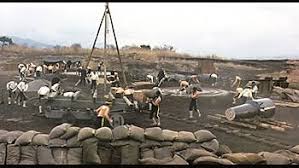The Gilded Age: Industrial Growth and Social Change in America

Introduction
The Gilded Age, a term coined by Mark Twain, refers to the period in American history spanning from the 1870s to about 1900. This era was marked by rapid economic growth, the emergence of great fortunes, and stark social inequalities. Understanding the Gilded Age is crucial, as it laid the foundation for modern America, influencing everything from economic practices to social structures and political frameworks.
Economic Expansion and Industrialisation
During the Gilded Age, America underwent unprecedented industrialisation. The rise of industries such as steel and railroads transformed the economic landscape. Figures such as Andrew Carnegie, John D. Rockefeller, and J.P. Morgan became synonymous with American capitalism as they amassed vast wealth and control over significant sectors of the economy. By 1900, the United States had become the world’s leading industrial nation, producing more than any other country in the world.
Social Impacts and Inequality
However, this economic growth did not benefit all Americans equally. The era is notorious for its glaring inequalities, with a small percentage of the population holding a majority of the wealth. The gap between the affluent elite and the working class widened considerably, resulting in harsh working conditions for labourers, widespread poverty, and inadequate living standards in urban areas. Workers began to organise, leading to the formation of unions and strikes, which highlighted the need for social reform.
Political Landscape and Reform Movements
Politically, the Gilded Age was characterised by corruption and patronage, with powerful business interests often influencing government policies. However, this led to the rise of reform movements aimed at addressing social injustices and government corruption. The Progressive Era emerged in the early 20th century as a response to the challenges posed by the Gilded Age, advocating for reforms such as women’s suffrage, labour rights, and antitrust laws.
Conclusion
The Gilded Age significantly shaped the trajectory of American society. While it was a time of great prosperity for some, it also exposed the deep-rooted social issues that still resonate today. The legacies of this era, including economic disparity and the fight for workers’ rights, continue to influence contemporary discussions on economic policy and social equality. As we reflect on the Gilded Age, it serves as a reminder of the complexities of progress and the importance of ensuring that economic growth benefits all segments of society.









